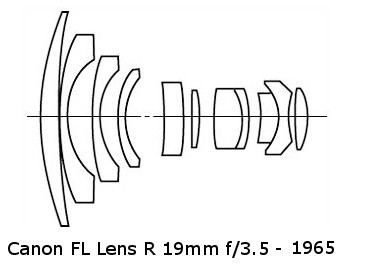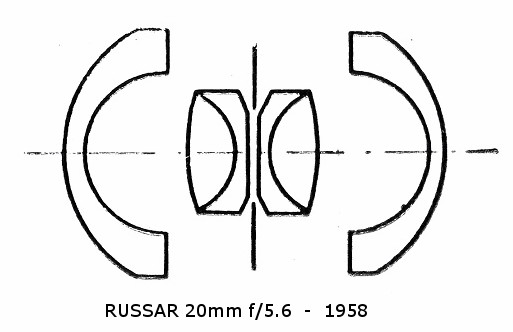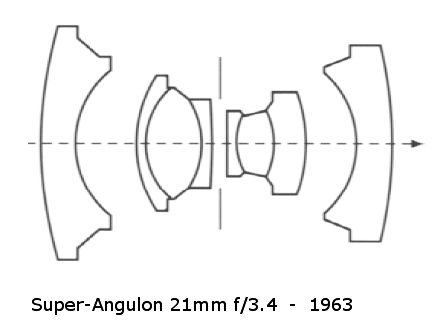 |
The construction of the Canon 19mm f/3.5
consists of 9 elements in 7 groups and was quite complex for
its day. It was probably the first retrofocus lens built for
a rangefinder camera. In parallel the lens was released in
SLR mount, which had a shorter body and required mirror
lock-up and also an extra viewfinder for the accessory shoe.
It seems, at least in the beginning, that there were two
different viewfinders, with the viewfinder of the lens with
a Leica mount being slightly shorter. However, both lenses
were given the same type of case.
With 200g weight, 30.5 mm length and 55 mm filter it
was pleasantly compact. Unlike other ultra wide angles,
operation with the front aperture ring with click stops was
like a standard lens. Also, the black and silver style with
a knurled focus ring (as in the 35/1.5 and 50/1.2 from 1956
or the 50/1.4 since 1959) was quite standard (the last six
releases since 1960 however had been all black).
The original price was 40,100 ¥ without taxes - converts to
1.270 € (2023). This was 20%
more expensive than previous widest-angle, 25mm f/3.5 from
1956 at 32,500 yen, but significantly less than the
superfast "dream lens" 50 f/0.95 which costed ¥ 57.000,- or
2.170 € (2023) plus taxes. |












